#John Mallord William Turner
Photo


Venice: The Dogana and San Giorgio Maggiore (detail), c. 1834. John Mallord William Turner
#Venice: The Dogana and San Giorgio Maggiore#art#John Mallord William Turner#English artist#veduta#architecture#Venice#Italy#artedit#art detail
574 notes
·
View notes
Text

Joseph Mallord William Turner (English, 1775-1851)
2 notes
·
View notes
Photo

Joseph Mallord William Turner
John Linnell (1792–1882)
National Portrait Gallery, London
38 notes
·
View notes
Text

MWW Artwork of the Day (11/27/23)
Joseph Mallord William Turner (British, 1775-1851)
The Thames above Waterloo Bridge (c. 1835-40)
Oil on canvas, 90.5 x 12.1 cm.
The Tate Gallery, London
This unfinished painting takes us to the heart of the smoky commercial capital which, though a Londoner by birth and resident for most of his life, Turner usually preferred to depict from a distance. Here he looks along the Thames towards Waterloo Bridge, designed by John Rennie and opened in 1817, two years after the Battle of Waterloo. Turner’s view dates from the 1830s and he was perhaps planning a response in kind to John Constable’s "Opening of Waterloo Bridge" (Tate), which appeared at the Royal Academy in 1832.
5 notes
·
View notes
Text
Highlights From a Recent Visit to the Museum of Fine Arts, Boston


Jean Baptiste Armand Guillaumin (French, 1841-1927) Bridge in the Mountains • 1887 • oil on canvas
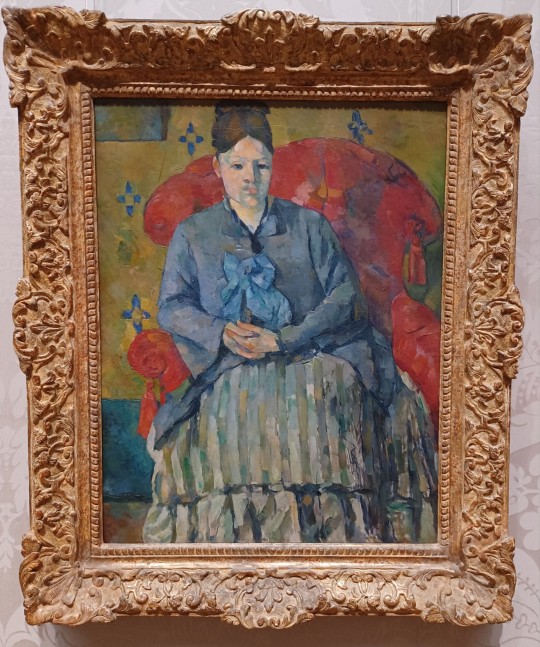
Paul Cézanne (French, 1839-1906) • Madame Cézanne in a Red Armchair • c. 1877 • oil on canvas

Gustave Caillebotte (French, 1848-1894) • Les dahlias, jardin du Petit Gennevilliers • 1893 • oil on canvas

Giuseppe Maria Crespi Italian (Bolognese, 1665-1747) •
Woman Tuning a Lute • c. 1700-05 • Oil on canvas

Joseph Mallord William Turner (English, 1775-1851)
Slave Ship (Slavers Throwing Overboard the Dead and Dying, Typhoon Coming On), 1840 • Oil on canvas
At first glance, a dazzling sunset distracts from the confusion and terror in the foreground of this painting. Its lengthy title alludes to an atrocity, probably the 1781 incident of the slave ship Zong. The ship's crew murdered 132 sick and dying enslaved Africans by throwing them overboard to collect insurance money for those "lost at sea." The resulting outcry galvanized abolitionism in Britain.

Paul Signac (French, 1863-1935) • Antibes, The Pink Cloud • 1916 • Oil on canvas
In a 1916 letter to a critic, Signac annotated a sketch of this "portrait of a cloud" to reveal the cloud's "personalities." He referred to the vaporous form at upper left as Loïe Fuller-an American dancer who had taken Paris by storm in the 1890s-and pointed out "some Michelangelesque figures" in the dark underside of the cloud at right. Signac called the German gunboats in the lower right corner "the black squadron."

Paul Signac (French, 1863-1935) • Port of Saint-Cast • 1890 • Oil on canvas
Port of Saint-Cast is one of a series of four seascapes that Signac painted along the coast of Brittany in northwest France.

Eugène Louis Boudin French (1824-1898) Fashionable Figures on the Beach • 1865 • Oil on panel

Carlo Crivelli (Italian [Venetian]), c. 1430/35-c. 1495
Lamentation over the Dead Christ, 1485 • Tempera on panel
With its gilding and elaborate patterning, this painting feels like a precious object. The raised decoration and the dimensionality of the forms heighten the intensity of Jesus's suffering. John the Evangelist's mouth stretches wide in grief, while the Virgin Mary's face bears the agony of losing her son. The perspective encourages the viewer to look up at the dead Christ, just as Mary Magdalen does while supporting his body. The fruits and vegetables hanging above, lush and full of life, have specific meanings, but together they remind the viewer that Christ will soon be resurrected. Crivelli, a master of pairing ornamental splendor with emotive power, has signed and dated the painting along the stone ledge.
Photo credit: ©Pagan Sphinx Photography
#art#painting#fine art#art history#religious painting#divisionism#jmw turner#carlo crivelli#boudin#guiseppe crespi#paul signac#french artist#french painter#italian artist#renaissance art#19th century art#eugene guillaumin#14th century art#british artist#armand guillaumin#paul cezanne#paul cézanne
2 notes
·
View notes
Text
Best Pieces from a Dead Bazzilionaires Collection - Collection Pt. 1
⠀⠀⠀- only sort of in the order I saw them -
⠀⠀Is this gonna be like half the gallery? Yeah, but I'm high and in it rn

[1] EDWARD STEICHEN -- The Flatiron (1904)
⠀⠀\\ Honestly shocked that this is a photo and not a painting. It looks ⠀⠀⠀muddied like it has 200 year old varnish on it. Fun fact this guy ⠀⠀⠀also pioneered fashion photography.

[2] GEORGES SEURAT -- Les Poseuses, Ensemble (Petite version) (1888)
⠀⠀\\ Does including your most popular painting in the background of ⠀⠀⠀your painting count as cheating? Did he know it was his most ⠀⠀⠀popular painting at the time? So many questions

[3] RENE MAGRITTE -- La voix du sang (1948)
⠀⠀\\ This one always evokes childlike wonder in me. Something ⠀⠀⠀about the cubbies maybe? I love it



[4] HENRI LE SIDANER -- La Sérénade, Venise (1907)
[5] SALVADOR DALI -- Le spectre de Vermeer (1934)
[6] VINCENT VAN GOGH -- Verger avec cyprès (1888)

[7] HENRI-EDMOND CROSS -- Rio San Trovaso, Venise (1903-04)
⠀⠀\\ These bitches love Venice. Bright like I just took my sunglasses ⠀⠀⠀off after eye surgery.



[8] JOSEPH MALLORD WILLIAM TURNER -- Depositing of John Bellini’s Three Pictures in La Chiesa Redentore, Venice (1841)
[9] DIEGO RIVERA -- The Rivals (1931)
[10] GERHARD RICHTER -- Ohne Titel (1989)

[11] MAXFIELD PARRISH -- Hilltop (1926)
⠀⠀\\ Once again childhood wonder. I too would sit on that hill forever; ⠀⠀⠀so bright so beautiful

[12] JASPER JOHNS -- Numbers (1963-68)
⠀⠀\\ Reminds me of the cover of HEY WHAT. Rest In Piece Mimi ⠀⠀⠀Parker, one of the best to do it.
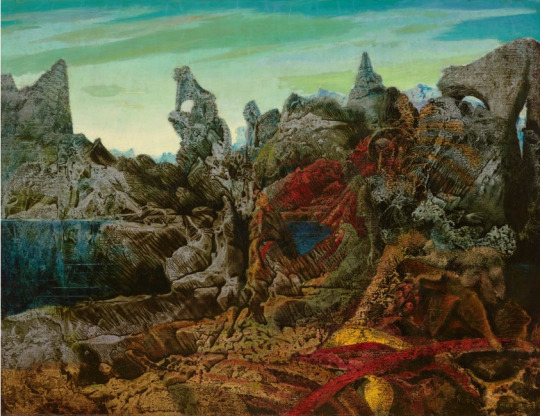

[13] MAX ERNST -- Paysage avec lac et chimères (1940)
[14] JOSEPH MALLORD WILLIAM TURNER -- The Lungernsee by Moonlight, Switzerland (1848)
mf had good taste
2 notes
·
View notes
Text
Artist Research, Research Report
After looking through different forms of relations and connections with landscapes, I found the idea of certain artists being connected or potentially focusing on the same specific landscape as me, that being the landscape of North Wales an interesting topic to research next in this research project. By doing this I hope for there to be a similar but different feel to the next pieces produced in the next six weeks of the graphic media project.
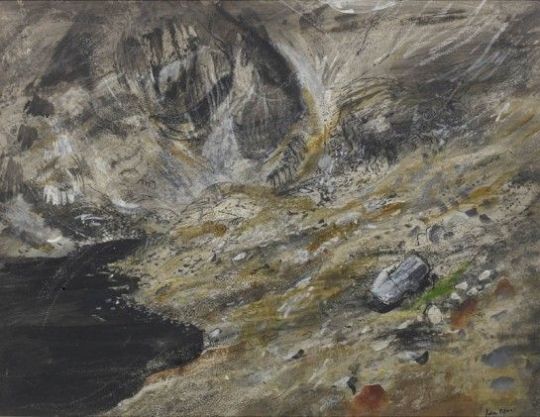
Figure 1, Ffynnon Lloer 1948-50, John Piper

Figure 2, Cwm Idwal, North Wales, John Piper
One fascinating artist that can be looked at is John Piper who was an English Painter, Printer, and Designer of stained glass windows. He studied at Epsom College and then later trained at the Richmond School of Art and then continued at the Royal College of Art in London. Later on in his career between the years 1943 to 1950 John Piper spent his time exploring the location of Snowdonia the project was entitled ‘The Mountains of Wales’ during this period he produced several artworks drawn from life often in materials such as Ink, Watercolours, Gouache, and Oil Paints. These images are seen to have a large amount of drama with very interesting varieties of tone as most if not all are a very limited colour palette (Amgueddfa Cymru, John Piper: A Journey Through Snowdonia (museum.wales)). After having drawn in many areas of North Wales in this time he decided to move to South Wales spending large amounts of his time drawing and creating work in areas such as Pembrokeshire. The work of John Piper can be seen to capture his passion for this specific landscape which in many ways I would have liked to capture in mine.
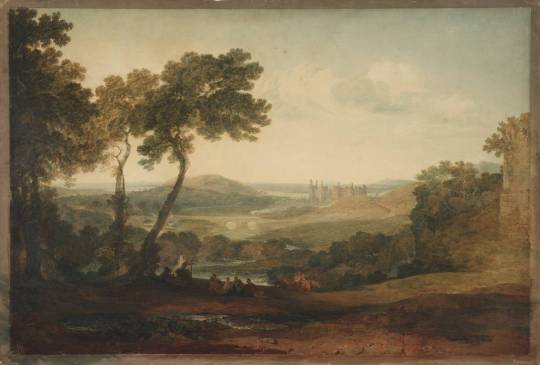
Figure 3, Caernarfon Castle, North Wales, J M W Turner (Joseph Mallord William Turner, 'Caernarvon Castle, North Wales' 1800 (J.M.W. Turner: Sketchbooks, Drawings and Watercolours) | Tate)
The second artist being looked at is J M W Turner, an English Romanticism Painter, Printmaker and Watercolourist who sometimes used the landscapes of North Wales as a focus point. His landscapes in general are often described to be very creative and he is also well known for his expressive use of colours in the images he creates. At the point in his career when he was painting in the landscapes and mountainous areas of North Wales a main focus of his was the idea of Myths, Ancient History and the Dramas of Human Tragedy which in many ways may have helped with the narrative feel that is created in a number of his pieces. He once again like the previously spoken about artist John Piper travelled to the sites that he wished to draw, throughout the majority of his career he stuck to this having travelled large amounts of the UK and Europe throughout his life (Llyfrgell Genedlaethol Cymru, Turner and Wales - National Library of Wales). The work of J M W Turner was also one of John Piper's influences and the reason he decided to pursue creating art based on the landscapes of North Wales.

Figure 4, Oil Painting Of the Welsh Landscape, Ian Walton (The Ian Walton Gallery Farndon (ian-walton.com))
The third and final artist that will be looked at is Ian Walton who lives and paints in Beaumaris, Anglesey. His work often has a focus point that is based on skies, seascapes, and mountains. They are all completed in oil paints which he is self-taught having begun at the age of 13. When reading about this work his inspiration is often based around the idea of the power of nature, using a limited colour palette similar to most other artists that have been looking at work based around the idea of varying tones with similar intentions to John Piper in attempting to capture the drama of the places he paints. One of his main reasons for continuing to use the same landscapes and locations throughout his career is the idea that specifically in Wales there is a never-ending source of inspiration to gain reference from. A quote taken from his gallery site that can be particularly interesting is “I believe artists grow if they experiment and keep pushing the barriers, and create at their best when they have a connection with the subject. ” (About | The Ian Walton Gallery, The Ian Walton Gallery Farndon (ian-walton.com)) This peaked interested as the idea of gaining a connection with your source of inspiration often making your work better links with the idea of having a national identity and cultural identity as in this case he has always been from the area of Beaumaris, Anglesey he does, however, travel all over the area of Wales to create his oil paintings including places like Snowdonia and Llyn Peninsular.
Therefore after going back to look at several artists again before starting the second half of the Graphic Media project it now means that these people can be used as a reference when figuring out what I hope to achieve in the next six weeks. How the pieces may be produced in terms of colours and tones as well as styles.
Bibliography
Amgueddfa Cymru, April 2012, Melissa Munro, Available at John Piper: A Journey Through Snowdonia (museum.wales)
Ian walton, n.d., Ian walton.com, Available at The Ian Walton Gallery Farndon (ian-walton.com)
J.M.W Turner, May 2021, Biography, Available at J.M.W. Turner - Paintings, Facts & Art (biography.com)
J.M.W Turner Sketchbooks, 1798, Tate, Available at North Wales Sketchbook 1798 (J.M.W. Turner: Sketchbooks, Drawings and Watercolours) | Tate
J.M.W Turner Sketchbooks, 1800, Tate, Available at Joseph Mallord William Turner, 'Caernarvon Castle, North Wales' 1800 (J.M.W. Turner: Sketchbooks, Drawings and Watercolours) | Tate
John Piper, N.d., Tate, Available at ‘ii‘, John Piper, 1944 | Tate
0 notes
Text




I was thinking about different historical artists who have made studies and paintings focusing solely on clouds, as Nikki has done, and these three artists, primarily active in 19th century, came to mind. Constable's abbreviated marks suggest quick work in response to the fast-changing skyscape. I like how Cole grounds his representation using the thinnest hint of land at bottom, and I absolutely love Turner's nearly abstract sketchbook mark-making.
John Constable (British 1776-1837). Cloud Study: Stormy Sunset 1821-1822. Oil on paper on canvas, 8 x 10 3/4 inches. National Gallery of Art, Washington, D.C.
Thomas Cole (American 1801-1848). Clouds ca. 1830s. Oil on paper laid down on canvas, 8 3/4 x 10 7/8 inches. The Metropolitan Museum of Art, New York.
(Followed by detail of the above.)
Joseph Mallord William Turner (British 1775-1851). Study of Clouds c.1822-3 (from Ports of England Sketchbook). Watercolor on paper, 10 x 7 inches. Tate, London.
0 notes
Text
[Disclaimer: this is a bunch of art history facts and tidbits masquerading as Midnight Pals fanfiction. I am so bored. Midnight Pals is by @bitterkarella , it's very good and you should read/listen. hello good day and I am so sorry]
Nièpce: Uhm. Bonjour. I would like to introduce you you all this new thing I made called a heliograph?
Caravaggio: who the fuck invited the chemist.
Hopper (looking at the heliograph): I like it. It reflects the tristesse and pointlessness of the world.
Genteleschi (talking over Hopper,to Caravaggio): who the fuck invited you.
Stieglitz: I like it and I'll argue your case but you must NEVER bring up the word "Kodak"
(A cartoonish brawl breaks out in the background)
Nièpce: What's a Kodak?
(scene)
Turner: I would like to introduce to you my painting Snow Storm – Steam-Boat off a Harbour's Mouth Making Signals in Shallow Water, and going by the Lead. The Author was in this Storm on the Night the "Ariel" left Harwich
(Everybody looks at the painting)
Hopper: but what's the painting called.
Turner (sarcastically): it was called many things by the critics.
Turner:...
Turner: you can call it snowstorm.
(scene)
Duchamp: I would like to introduce you to my painting "Nude descending a staircase"....
Gauguin (startling out of deep sleep): Tits??
Gauguin (squinting at the painting): .....
Gauguin: go fuck yourself Marcel.
Genteleschi (nursing a stab wound from the earlier fight) That's what you should do, then you'd stop making women sick.
(murmurs of agreement)
(scene)
Dramatis personae:
Nicephore Nièpce, an early pioneer of photography (his heliograph is today regarded the first photograph ever)
Alfred Stieglitz: American photographer, part of the pictorialist movement that heavily pushed the "photography is a form of art too damn it" angle after the Eastman Kodak company released the first commercially viable photo camera and photography went from a totally obscure nerd hobby that only a few people could even pull off to something that everyone could easily do.
Caravaggio: Renaissance painter. Most of the information that exists on him are court records of his stab-happy crime spree and that he once sued a guy for painting in his style which is a 21st century dick move. He got thrown out of two different cities for the crime of stabbing a guy fatally in the balls. This is really all you need to know about Caravaggio.
Artemisia Genteleschi, renaissance WOMAN and absolute badass. There were woman artists back then but not many and she could already paint at a professional level at age fifteen or sixteen! She got admitted to the academy of arts!! She sold her paintings internationally! She was really really good.
Edward Hopper, member of the school of so called "American realism" and probably clinically depressed according to my classmate who did the presentation on him. If it looks sorta realistic and exudes a sense of isolation and loneliness even if there is multiple people in the painting, it's probably one of his. (He was part of last year's art history final and I thank whoever looks kindly on highschoolers that I was able to retain some information from that presentation as well as.my classmate for picking him off the list)
William James Mallord Turner
British landscape painter. Regarded as Britain's Favorite painter (these days)
He was supposed to be the subject of my presentation but I begged my teacher to let me do Marcel Duchamp instead. I have since seen the errors of my way.(more on that later) Snowstorm is currently on loan to the Lenbachhaus, an art museum in Munich Germany, and I went to the exhibition and stood right in front of it. It's really something.
The things the critics said about Snowstorm were "soapsuds and whitewash" and "all of the contents of his (Turner's) pantry"
Now Turner had a certain "fuck off" attitude to artistic people pleasing but according to a contemporary source called John Ruskin (I think) he read that scathing review and went "soapsuds and whitewash! Soapsuds and whitewash! I wonder what they think the sea's like!? I wish they'd been in it!" which I think is hilarious.
And finally Marcel Duchamp.
What the fuck do I say about him? I have done the presentation. I got a 2 (that's pretty good!) And I still struggle to understand what the guy was even doing. His most well known contribution to art is an upside down toilet. Or well...a photo of that that was photographed by Stieglitz.
He was french I guess that's what I can say about him. I was like "oh he did Object art. I do object art. I'll like what he made" but it turns out that "object art" is a really vague catch-all term. :) who could've guessed. I like Tom Every more (look up the Evertron. It's the world's largest scrap metal sculpture and it is freaking phenomenal. THAT'S what I wanna do. Not Marcel Duchamp. I wanna make whimsical shit like he did or weird shit like Luise Bourgeois did. They're my art heroes. Not Marcel Duchamp. just wanted to make Gauguin look bad cause he was a thoroughly unpleasant person who I wouldn't touch with a six meter pole )
1 note
·
View note
Text
Romanticismo
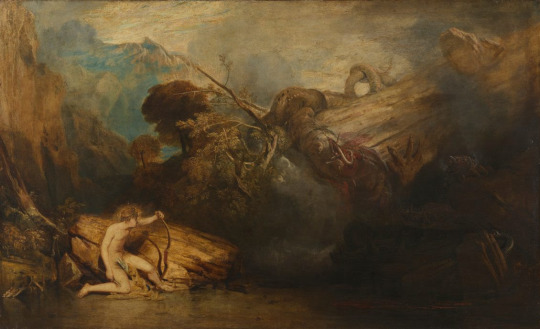
Joseph Mallord William Turner (1775-1851, England) | Apollo Kills the Python, 1811
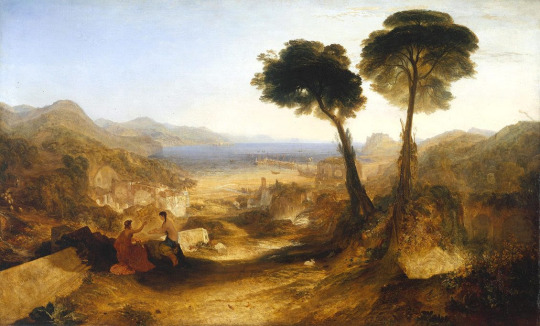
Joseph Mallord William Turner (1775-1851, England) | The Bay of Baiae with Apollo and the Sibyl, 1823
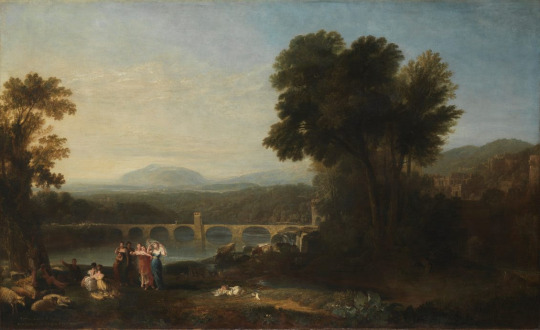
Joseph Mallord William Turner (1775-1851, England) | Apulia in Search of Apulo, 1814

Joseph Mallord William Turner (1775-1851, England) | Apollo e Dafne, 1837
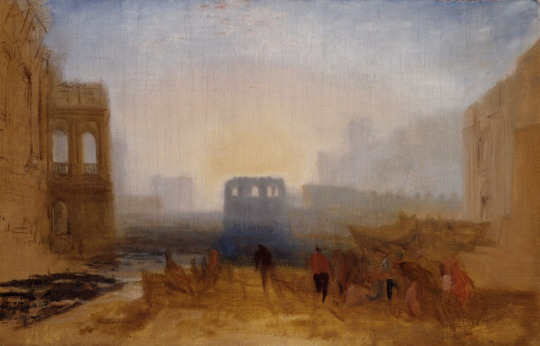
Joseph Mallord William Turner (1775-1851, England) | Study, Port Scene, 1827-28

John Constable (1776-1837, England) | The Hay Wain (Il Carro di Fieno), 1821 (London, National Gallery)
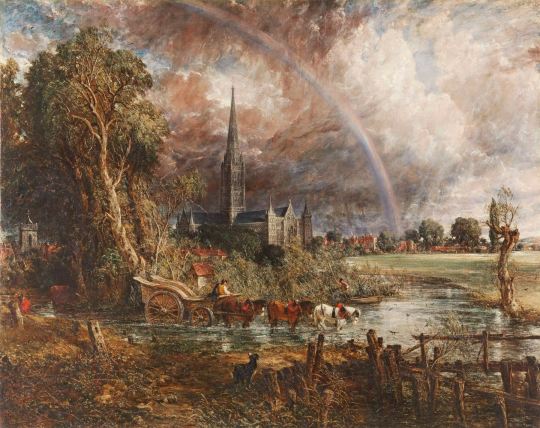
John Constable (1776-1837, England) | Salisbury Cathedral, 1831 (London, Tate)

Théodore Géricault (1791-1824, France) | La Zattera della Medusa, 1819 (Paris, Louvre)

Caspar David Friedrich (1774-1840, Germany) | Viandante sul Mare di Nebbia, 1818 (Hamburger Kunsthalle)

Canaletto (1697-1768, Italia) | L’arrivo dell’Ambasciatore francesce Jacques-Vincente Languet, Comte de Gergy, Palazzo Ducale, Venezia, 5 novembre 1726, 1726-27
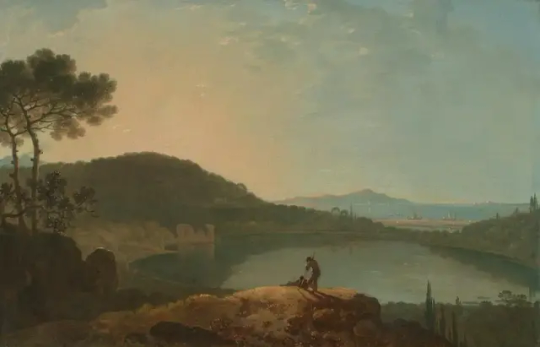
Il Lago d’Averno, 1760 ca. (London, Tate) | Richard Wilson (1714-1782, Galles)
1 note
·
View note
Text
Third post of Art cropped and resized to 281x459 pixels for sims 2 custom paintings.
Links lead to the museums and larger pictures. Save the tiny ones here for your custom paintings folder if you want them for you simmies.

Creator: Thomas Gainsborough RA, 1727–1788
Title: Mary Little, later Lady Carr
Date:ca. 1765
Medium:Oil on canvas
Dimensions:50 × 40 inches (127 × 101.6 cm), Frame: 58 × 48 inches (147.3 × 121.9 cm)

Creator:John Constable, 1776–1837
Title: East Bergholt Church [2007, Paul Mellon's Legacy: a Passion for British Art: Masterpieces from the Yale Center for British Art, exhibition catalogue]
Former Title(s):East Bergholt House from Church Street [1996, Reynolds, The early paintings and drawings of John Constable, catalogue raisonné]
Date:1809
Medium:Oil on paper mounted to panel
Dimensions:7 15/16 x 6 3/16 inches (20.2 x 15.7 cm), Frame: 10 1/4 × 8 3/4 inches (26 × 22.2 cm)

Creator:Attributed to John Constable, 1776–1837
Formerly John Constable, 1776–1837
Title: Study of Hollyhocks
Former Title(s): Hollyhocks
Date:ca. 1826
Medium:Oil on board
Dimensions:9 1/2 x 7 inches (24.1 x 17.8 cm)

Creator:John Constable, 1776–1837
Title: Study of an Ash Tree
Date:between 1801 and 1803 or between 1810 and 1830
Medium:Oil on canvas laid to artist's board
Dimensions:15 1/2 x 11 3/4 inches (39.4 x 29.8 cm), Frame: 15 1/2 × 13 1/4 inches (39.4 × 33.7 cm)

Creator:Richard Parkes Bonington, 1802–1828
Title: Corso Sant'Anastasia, Verona
Former Title(s): Corso Sant'Anastasia, Verona, Italy A highly finished view of the Palace of Count Maffei at Verona
Date:1828
Medium:Oil on millboard
Dimensions:25 5/8 x 17 3/8 inches (65.1 x 44.1 cm), Frame: 30 1/4 × 24 × 3 7/8 inches (76.8 × 61 × 9.8 cm)
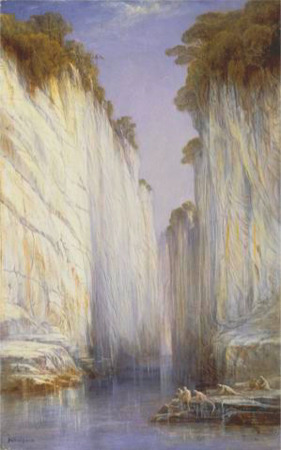
Creator:Edward Lear, 1812–1888
Title: The Marble Rocks — Nerbudda Jubbolpore
Date:1882
Medium:Oil on canvas
Dimensions:15 x 9 1/2 inches (38.1 x 24.1 cm)
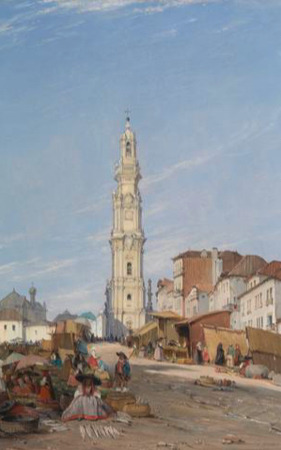
Creator:James Holland, 1799–1870
Title: Torre Dos Clerigos, Oporto, Portugal
Date:1837
Medium:Oil on canvas
Dimensions:21 1/2 x 15 1/4 inches (54.6 x 38.7 cm)
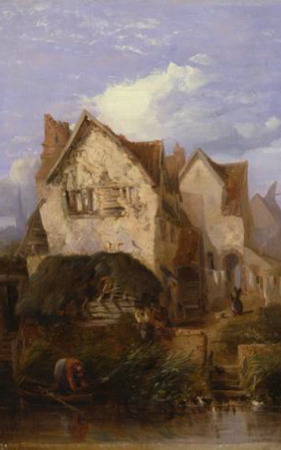
Creator:Thomas Lound, 1802–1861
Title: A View near Norwich
Former Title(s): Old Houses, Norwich [1851, Royal Academy of Arts, London, exhibition catalogue]
Date:ca. 1850
Medium:Oil on canvas
Dimensions:16 5/8 x 12 3/8 inches (42.2 x 31.4 cm)

Creator:unknown artist nineteenth century
Formerly Peter DeWint, 1784–1849
Formerly Joseph Mallord William Turner, 1775–1851 (as purchased)
Title: Street with Church and Figures
Date:1822 to 1825
Medium:Oil on paper
Dimensions:7 3/4 x 5 3/4 inches (19.7 x 14.6 cm)
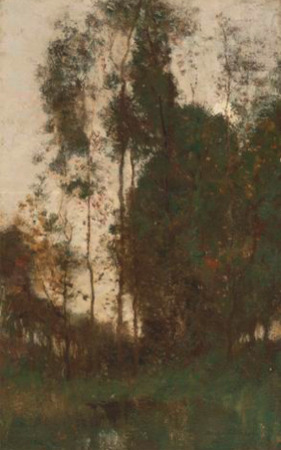
Creator:Robert Macaulay Stevenson, 1854–1952
Title: `Reve de crepuscule'
Date:between 1890 and 1895
Medium:Oil on canvas
Dimensions:21 x 13 inches (53.3 x 33 cm)
0 notes
Photo

Venice: The Dogana and San Giorgio Maggiore, c. 1834. John Mallord William Turner
#Venice: The Dogana and San Giorgio Maggiore#Art#joseph mallord william turner#J. M. W. Turner#english artist#veduta#Venice#Italia#Architecture#Artedit
181 notes
·
View notes
Photo

John Mallord William Turner | The Blue Rigi, Sunrise, 1842 #sacredsoilofalbion https://www.instagram.com/p/Cl2wy6JKLlW/?igshid=NGJjMDIxMWI=
0 notes
Text
Das Metropolitan Museum - New York
Autor: J. J. Rorimer, E. A. Standen
Titel: Malerei der Welt - Das Metropolitan Museum in New York
Verlag: DuMont Schauberg
Erschienen: 1959
Sprache: Deutsch
- El Greco
- Werkstatt des Giotto
- Piero di Cosimo
- Andrea Mantegna
- Robert Campin
- Dirk Bouts
- Hieronymus Bosch
- Caravaggio
- Rembrandt Harmensz van Rijn
- Velasquez
- Jusepe Ribera
- Francesco Guardi
- John Constable
- Constance Marie Charpentier
- Gustave Courbet
- Pesellino
- Giovanni di Paolo
- Sassetta
- Andrea del Verrocchio
- Antonio Pollaiuolo
- Carlo Crivelli
- Fra Carnevale
- Antonello da Messina
- Vittore Carpaccio
- Sandro Botticelli
- Raffael
- Hubert van Eyck
- Rogier van der Weyden
- Petrus Christus
- Hugo van der Goes
- Hans Memling
- Joachim Patinir
- Lucas Cranach der Ältere
- Albrecht Dürer
- Pieter Bruegel der Ältere
- Hans Holbein der Jüngere
- Bronzino
- Tizian
- Tintoretto
- Veronese
- Anton van Dyck
- Edouard Manet
- Claude Monet
- Edgar Degas
- Pierre Auguste Renoir
- Paul Cezanne
- Georges Seurat
- Vincent van Gogh
- Paul Gauguin
- Peter Paul Rubens
- Nicolas Poussin
- Jacob Isaacksz Van Ruisdael
- Meindert Hobbema
- Jan Vermeer van Delft
- Frans Hals
- Francisco de Goya
- Jean-Antoine Watteau
- Francois Boucher
- Jean Baptiste Simeon Chardin
- Canaletto
- Joshua Reynolds
- Joseph Mallord William Turner
- Thomas Lawrence
- Jaques Louis David
- Jean Auguste Dominique Ingres
- Honore Daumier
- Jean Baptiste Camille Corot
Read the full article
#AlbrechtDürer#AndreadelVerrocchio#AndreaMantegna#AntonvanDyck#AntonellodaMessina#AntonioPollaiuolo#Bronzino#Canaletto#Caravaggio#CarloCrivelli#ClaudeMonet#ConstanceMarieCharpentier#DirkBouts#EdgarDegas#EdouardManet#ElGreco#FraCarnevale#FrancescoGuardi#FranciscodeGoya#FrancoisBoucher#FransHals#GeorgesSeurat#GiovannidiPaolo#GustaveCourbet#HansHolbeinderJüngere#HansMemling#HieronymusBosch#HonoreDaumier#HubertvanEyck#HugovanderGoes
0 notes
Text
Turner, o pintor romántico que apostou pola luz
A pintura dos artistas románticos pasa por ser a expresión das emocións, pero aínda dentro da tradición renacentista, aínda polo rego do figurativismo. Mais o artista William Turner, sendo romántico, rematou por mirar máis aló, e ser quen de reflectir os seus estados de ánimo nas cores que dicía que vía; as tonalidades que captaba segundo fose a luz. William Turner foi un precursor do impresionismo? Foi, acaso, un pintor abstracto?
Lito Caramés

W. Turner. Desembocadura del riu Humber. 1824
Turner. La llum és color. Museu Nacional d’Art de Catalunya
Bright star! would I were steadfast as thou art— / Not in lone splendour hung aloft the night, / And watching, with eternal lids apart, / Like Nature‘s patient sleepless Eremite, / The moving waters at their priestlike task / Of pure ablution round earth‘s human shores, / Or gazing on the new soft fallen mask / Of snow upon the mountains and the moors— / No—yet still steadfast, still unchangeable, / Pillow‘d upon my fair love‘s ripening breast, / To feel for ever its soft fall and swell, / Awake for ever in a sweet unrest, / Still, still to hear her tender-taken breath, / And so live ever—or else swoon to death. (J. Keats, Bright star! would I were steadfast as thou art, 1819).
Nestes meses centrais de 2022, ano de guerra para Ucrania e -desgraciadamente- para moitos outros lugares do planeta, o Museu Nacional d’Art de Catalunya (MNAC) presenta unha excepcional exposición temporal: Turner. La llum és color. Trátase da presentación de máis de cen obras elaboradas polo gran pintor romántico Joseph Mallord William Turner (1775-1851). Entre o cento de pezas a admirar nas salas do MNAC hai óleos e tamén bastantes acuarelas e deseños, ofrecidos agora como o que foron: estudos, apuntamentos para logo elaborar a que se consideraba a obra final: o óleo. Turner. La llum és color é unha produción do MNAC (estaba prevista para uns anos antes, pero seica foi aprazada por mor da pandemia), en colaboración coa Tate Galery de London que alberga nos seus fondos a máis importante colección de traballos de Turner. O pintor en vida decidiu legar ao estado do United Kindom moita da súa obra -e que xa foi aceptada polas autoridades no ano 1856, cinco anos despois do pasamento do artista viaxeiro-; razón pola que agora esta galería posúe uns 400 óleos ( a meirande parte inacabados), así como 35.000 acuarelas e esbozos. Turner tomaba notas de lugares, de fenómenos atmosféricos, daquilo que vira no mesmo intre (en acuarela ou deseños) para logo no estudo elaborar a obra acabada, case sempre ao óleo.

W. Turner. Llac, Petworth, capvespre; esbós d’estudi. 1827
William Turner (1775-1851) é un pintor romántico, por cronoloxía e mais polas maneiras de traballar que demostrou. Sempre tivo un especial interese pola natureza, unha das razóns que explican as súas constantes viaxes por Gran Bretaña e mais por boa parte de Europa. Considérase que a súa época de máis produtividade coincide coa da derradeira etapa da súa vida; entre 1835 e 1851 produciu o máis e mellor da súa pintura. E xa no século XX Turner pasou a ser un dos pintores románticos máis valorados e apreciados, e os seus traballos (rematados e non) influíron en moitos outros artistas, por exemplo en Mark Rothko. A mostra Turner. La llum és color está comisariada por David Blayney Brown, antigo conservador xefe de arte británico da Tate Gallery e todo un especialista na obra de W. Turner.
Mesmo mirando as creacións de William Turner como as manifestacións dun gran artista romántico, soubo combinar pasado e presente. Nas súas obras pódense visitar os máis elaborados episodios da mitoloxía clásica, así como asistir ao paso dun tren ou á navegación dos novidosos barcos de vapor. Este artista, pouco dado ás relacións sociais, acabou por estar obsesionado pola pintura, pola práctica pictórica. Traballou sen descanso en moitos temas e a partires de varias técnicas. Coméntase que -á súa morte- o seu mellor amigo John Ruskin queimou moita obra do artista, entre outras cousas moreas de debuxos eróticos que levaba feitos o autor de Desembocadura do río Humber. Non hai moito, en cambio, comezaron a aparecer noticias que aseguran que Ruskin nunca queimou eses deseños. Onde están, logo?, que persoa ou persoas os poden ter?

W. Turner. Lluna nova; o «He perdut la meva barca, tu no tindràs el teu cèrcol». 1840
Turner. La llum és color. Romanticismo. O trunfo da cor
Poets and painters, as all artists know, / May shoot a little with a lengthened bow; / We claim this mutual mercy for our task, / And grant in turn the pardon which we ask; / But make not monsters spring from gentle dams-- / Birds breed not vipers, tigers nurse not lambs. (Lord Byron, Athens: Capuchin convent, 1811)
O apaixoado espírito de William Turner amaba a natureza (como xa se apuntou) e mesmo as manifestacións extremas da mesma; aquelas situacións que os humanos non poden controlar: galernas montañosas no mar, tempestades de neve e vento, etc. E nas súas obras -se aparece- é posible que a ou as figuras humanas se amosen pequenas, ben cativas en relación aos elementos naturais que as envolven. Aínda naquelas pinturas que menos deberían responder a este propósito como son algunhas mitolóxicas (como pode ser esta de Apollo and Daphne, que está agora en Montjuïc) o artista recrea unha paisaxe tan colosal que as figuras humanas -sendo divinas e todo- apenas se distinguen no conxunto.
Tense dito -e no MNAC está recollido- que Turner é o máis importante paisaxista do romanticismo. Serao en todo caso con permiso de Caspar David Friedrich, o gran pintor alemán mitificador de montañas e mares. Pois tamén Friedrich resalta o ananismo dos humanos fronte á Natureza, a pouca cousa que se deben sentir os humanos fronte ás forzas da Natureza. Para comparar ambos artistas, baste citar Der Mönch am Meer, obra sublime na que o ceo e mais o mar impoñen as súas inmensidades, e -outra volta- sorprende o diminuto monxe que se aproxima ao cantil. Nesta obra mesmo se diría que Friedrich está a dicir a quen a contemple que é a Humanidade enteira a que está mirando os abismos. Os abismos e misterios da existencia?, a inmensidade dos seus medos e interrogantes?
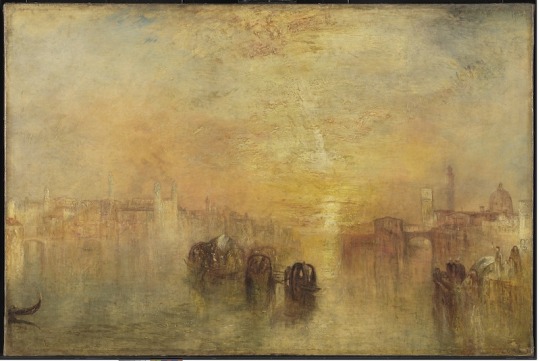
W. Turner, Anant cap al ball (San Martino). 1846
William Turner -para quen non o saiba- é o autor da obra A derradeira viaxe do Temeraire. O impoñente navío de vela e de guerra (buque insignia da armada británica que participara na batalla de Trafalgar) vai tirado por un flamante barco de vapor, no medio e medio dun vermello solpor que tingue de traxedia toda a escena. John Ruskin, amigo e defensor de Turner, escribiu sobre a pintura: É o máis patético que se ten pintado nunca… a nave deslízase cara a súa tumba… Nunca máis o sol de solpor pousará sobre el o seu vestido de ouro. Esta pintura foi escollida polos británicos (2005) como a súa obra nacional máis importante. Un exemplo perfecto de pintura romántica, chea de simbolismos: o paso do tempo a muda xeracional, unha época que morre fronte a outra que xa chega; a fin da navegación a vela e os comezos das naves a vapor. Como corresponde a un pintor romántico, a escena está idealizada, e o Temeraire (aínda que vai “morto”) loce a súa magnífica fábrica.
William Turner non é un pintor romántico ao uso. Non é un Delacroix, por exemplo, ou un Géricault; non se limita a imprimir tensión, dramatismo a pinturas de feitura figurativa, clásicas nese senso. Turner aposta pola cor. A súa prioridade non é o debuxo, a definición de volumes. Vai máis aló e procura xogar coas cores; unha paleta de cores que van do máis escuro e apagado a aquelas tonalidades máis fortes e cálidas. Turner foi un gran experimentador, procuraba mesturas novas, mirando de atopar aqueles tons que se lle resistían. Contan que andaba sempre á procura de novos pigmentos aos que logo xuntaba con elementos tan espaciais como a goma arábiga, ou azucre ou mel. Algúns deste experimentos teñen a consecuencia de que agora algunha das súas pezas vaian perdendo eses pigmentos mal fixados sobre telas e papeis.
Foi Turner un impresionista? De certo non. Pero si se pode aseverar que foi un precursor dese movemento que se iniciará uns vinte anos despois do seu pasamento. Turner comezou a experimentar á plein air como logo farán Monet e compañía, aínda que o autor de O gran tren do Oeste logo remataba a súa obra no obradoiro, cousa que os impresionistas xa non farán. Faltoulle a Turner vivir nos tempos en que a industria química fabrica tubos de chumbo coas cores xa preparadas, feito que permitirá a quen o queira facer levar esas pinturas á natureza e pintar directamente do natural.
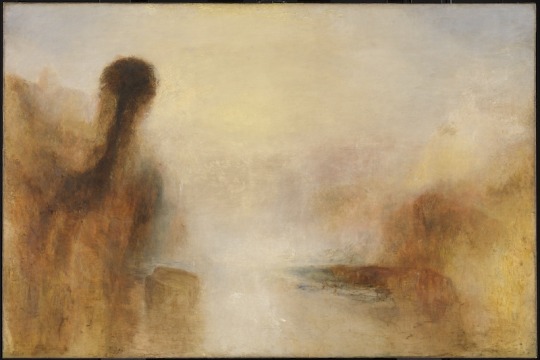
W. Turner. Paisatge amb aigua. 1840
Turner. La llum és color. Acuarelas e óleos. O sol é deus
I weep for Adonais -he is dead! / O, weep for Adonais! though our tears / Thaw not the frost which binds so dear a head! / And thou, sad Hour, selected from all years / To mourn our loss, rouse thy obscure compeers, / And teach them thine own sorrow, say: "With me / Died Adonais; till the Future dares / Forget the Past, his fate and fame shall be / An echo and a light unto eternity! (Percy Shelley, Adonais, 1821).
Na mostra Turner. La llum és color que agora se pode ver no MNAC, grazas ao convenio coa Tate Gallery londiniense, están presentes tanto acuarelas como óleos. As acuarelas eran, mormente e no caso deste pintor, traballos preparatorios, apuntamentos feitos na natureza. Despois, no obradoiro, o artista empregaba eses esbozos, a memoria daquilo que vira, e a imaxinación. Turner -como romántico- non deixa de andar á procura de efectos especiais, xa atmosféricos, xa paixóns humanas, que lle permitan transmitir estados de ánimo, as humanizacións tan ao uso no romanticismo. Á marxe dos tres grandes poetas románticos británicos dos que aquí se reproducen anacos das súas poesías (Keats, Byron e Shelley) outro tanto se pode dicir do quefacer de Espronceda cando se dirixe ao sol e mándao parar na súa perpetua viaxe polos ceos: Para y óyeme ¡oh sol! yo te saludo, ou algunhas das leyendas de Becquer. (A Canción del pirata dedicoulla Espronceda ao derradeiro pirata do Mediterráneo: Benito Soto, natural de Pontevedra).
William Turner procurou estudar a luz que en tantas formas se manifesta na Natureza para, de aí, extraer as cores que só el vía. Por iso lle agradaban tanto os fenómenos meteorolóxicos extremos. O pintor ten contado que, nunha ocasión, fíxose atar ao mastro dun barco para poder vivir en directo a treboada que se lles viña enriba, e ser quen -no obradoiro- de reproducir toda a magnificencia da mencionada tormenta. As creacións de Turner son atmosféricas. Non hai fidelidades ás perspectivas impostas no Quattrocento, prefire que os seus óleos respiren, que se poida sentir o vento e o frío na tempestade de neve. Por iso -e por guiarse pola imaxinación- hai nas súas obras visos de teatralidade; como se no obradoiro estudase como facer a posta en escena daquel tema que tanto lle interesa. Foi iso, e a vaporosidade da cores, o que tanto lle gustou a Vasili Kandinsky na súa etapa máis expresionista?
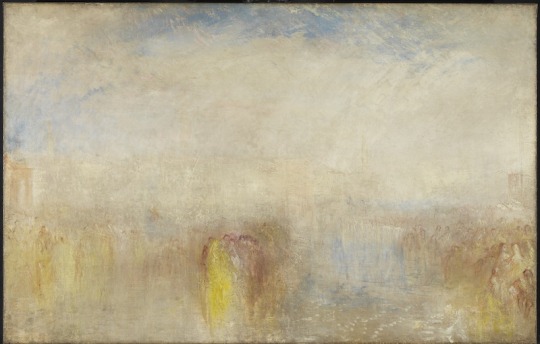
W.Turner. Festival de Venècia. 1845
Na traxectoria creativa de Turner hai unha progresión, loxicamente. E nos derradeiros vinte anos, o pintor foi máis prolífico e tamén foi cando abandonou máis o figurativismo e tendeu aínda máis aos puros xogos de luces e cores. Semella que nas pinturas dos anos 40 William Turner vai empregando menos elementos, simplificando escenografías, reducindo as prioridades ás tonalidades atmosféricas. Quere isto dicir que tamén Turner acabou por ter un estilo tardío, uns xeitos serodios de creatividade?
A existencia, ou non, do chamado Estilo tardío ten levantado polémicas e facer correr ríos de tinta. O primeiro estudoso que reflexionou sobre este concepto foi Theodor W. Adorno, cando se refería ás últimas composicións de Beethoven e á simplificación de formas e propostas que denotaba no compositor. Logo, quen mirou de estruturar e dar forma máis elaborada a tal maneira de crear foi E. W. Said, atendendo á produción de escritores e músicos. Segundo os teóricos do Estilo tardío tal cousa pode darse só nos grandes creadores, nunha etapa final da súa vida, onde se mesturan a debilidade física, o cansazo e a actitude consciente do artista de que calquera cousa nova que faga pouco ou nada vai aportar á súa traxectoria artística. Esas últimas creacións caracterízanse por apostar por esencialismos e mais pola simplificación. O Estilo tardío prodúcese (no caso que tal cousa aconteza) nun intre no que o artista, a pesar de ser dono absoluto do seu medio, abandona a comunicación coa orde social establecida da que forma parte e alcanza unha relación contraditoria e alienada con el mesmo (Adorno). Algúns estudosos observan esas especificacións do Estilo tardío nas derradeiras creacións de Picasso, cando ataca con forza os seus temas esenciais, ou na queima de lenzos por Miró, xa con 80 anos, ou nas pinturas negras de Goya. Ou naquelas telas que Renoir elaborou xa nos finais da súa vida.
É o caso de William Turner? Os puros efectos lumínicos nas derradeiras pezas do mestre da paisaxe e mais da luz semellan mostrar ese vieiro. É o que acontece coa obra (reproducida a carón destas liñas) Festival de Venecia? Evidentemente, Turner é un gran mestre.
Con estilo serodio ou sen el, o que paga a pena é achegarse ao Palau Nacional de Montjuïc, alí onde vai para noventa e cinco anos tivo a sede principal a Exposición Universal de 1929, e admirarse coa contemplación dos esbozos e creacións finais de William Turner, o mestre que, pouco antes de morrer, manifestou O sol é deus.
Lito Caramés
EXPOSICIÓN: Turner. La llum és color
Museu Nacional d’Art de Catalunya (MNAC)
ata o 11 de setembro de 2022
0 notes
Text

Stonehenge
Joseph Mallord William Turner, 1827-28.
Salisbury Museum.
Turner’s well-known watercolour of Stonehenge was the most violent image in his series of Picturesque Views in England and Wales, produced between 1825 and 1838. As a fierce storm moves off across Salisbury Plain, it leaves in its wake a shepherd who has been struck dead by lightning. Such tragedies were reported in the 1820s, but the incident has been interpreted symbolically by commentators like John Ruskin, for whom perceptions of Stonehenge were coloured by its darker, pagan associations. Turner possibly intended some kind of contrast between his representations of shepherds at Stonehenge and Salisbury. In the Salisbury view the shepherd withstands the hostile weather like a protective guardian, his upright figure providing an echo of the cathedral’s spire.
0 notes